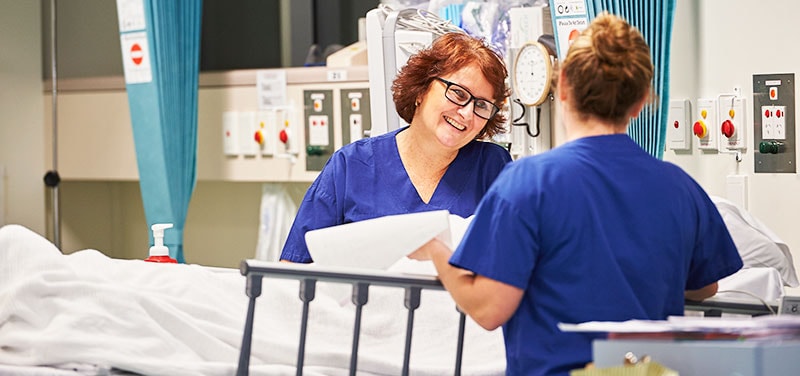- Our services
- Medical and surgical
- Anaesthetics
 Our services
Our services
- Medical and surgical
-
- Allied health
- Cardiac rehabilitation
- Falls prevention and balance
- Chronic disease management
- Exercise physiology
- Inpatient rehabilitation
- Nutrition and dietetics
- Occupational therapy
- Oncology rehabilitation
- Orthopaedic rehabilitation
- Outpatient rehabilitation
- Pulmonary rehabilitation
- Physiotherapy
- Reconditioning rehabilitation
- Speech pathology
- Social work
- Community and youth
- Healthcare at Home
Anaesthetics

There are three main types of anaesthetic: general, regional and local. The type you receive will depend on the procedure you are having and your anaesthetist’s recommendation.
Anaesthetics are administered prior to many different surgeries, diagnostic procedures, dental work and sometimes during childbirth.
Your anaesthetist will look after your wellbeing before, during and after surgery. Their goal is to keep you completely safe and make you as comfortable as possible.
Our anaesthetics services
We provide the highest standard of anaesthetic care, both during and after surgery.
This care is provided by an anaesthetist, who is a medically qualified doctor who has undergone specialist training.
If you have any concerns about any aspect of your anaesthetic or the process, please discuss these with your anaesthetist. Your anaesthetist and your caregivers are committed to your safety and comfort during your hospital stay. It is normal to feel a little nervous before anaesthesia but be assured that you will be well cared for.
Types of anaesthetics
There are different types of anaesthesia:
General anaesthesia
A general anaesthetic is given intravenously (via a needle), with gas, or both. If you are given a general anaesthetic, you become unconscious and are completely asleep during your procedure.
The anaesthetist is present throughout your procedure and will closely monitor your vital functions keeping you safe. When the procedure is finished you are woken up and then handed over to the care of the recovery room nurses.
Regional anaesthesia
A regional anaesthetic numbs nerves and stops you feeling pain in a specific area, for example a spinal or epidural anaesthetic will numb you from the waist down. Other nerve blocks can be used for arm, hand and leg surgery.
Local anaesthesia
A local anaesthetic is injected into the area which will be operated on, creating numbness. It prevents or relieves pain, but will not put you to sleep. It is often used for outpatient procedures and smaller operations.
Procedural sedation
For some procedures such as colonoscopy, endoscopy and cataract surgery you may receive sedation. You may be awake but feel a bit drowsy, unaware or even fall asleep at times during the procedure. Sedation uses just enough anaesthetic to make the procedure painless and tolerable but allows you to communicate and recover quickly.
Anaesthesia and surgery – what you can expect
Before surgery
Your anaesthetist will see you before your surgery, examine you and assess your general health and medical condition. They will also discuss your pain relief options with you, and answer any questions you may have.
During surgery
Your anaesthetist will administer anaesthesia and associated pain relief. They will monitor your vital functions (heart, lungs, kidneys and brain) during the surgery, keep you warm, and make all the necessary adjustments to keep you safe and well.
After surgery
Your anaesthetist will continue to monitor your condition and arrange intravenous fluids and prescribe analgesic drugs (painkillers) as required. Pain medication may be given intravenously, by injections or using tablets. It may even be a combination of these.
You may be interested in...
